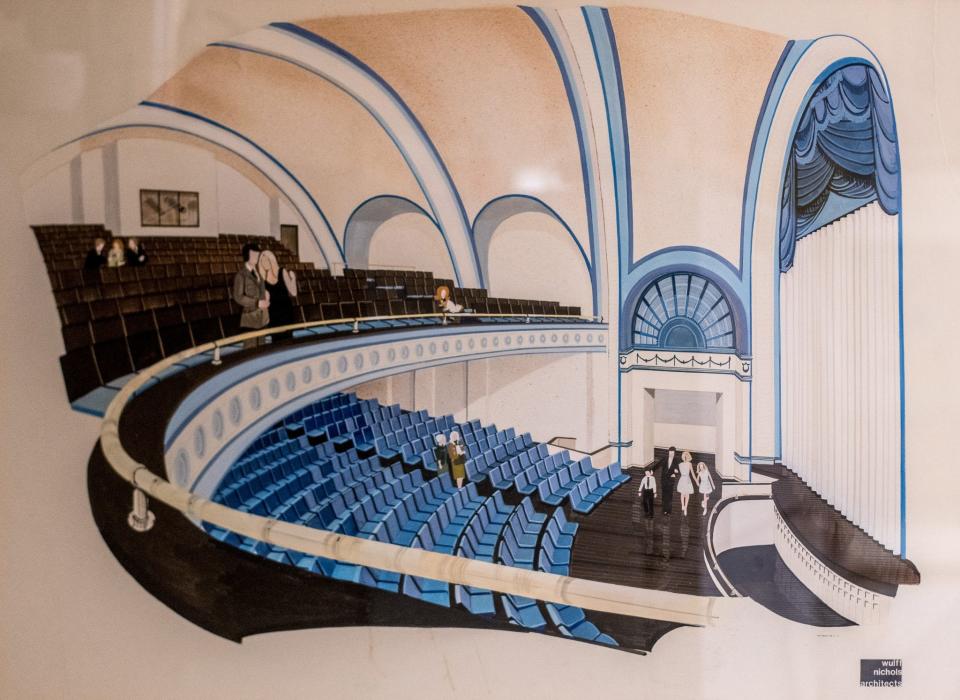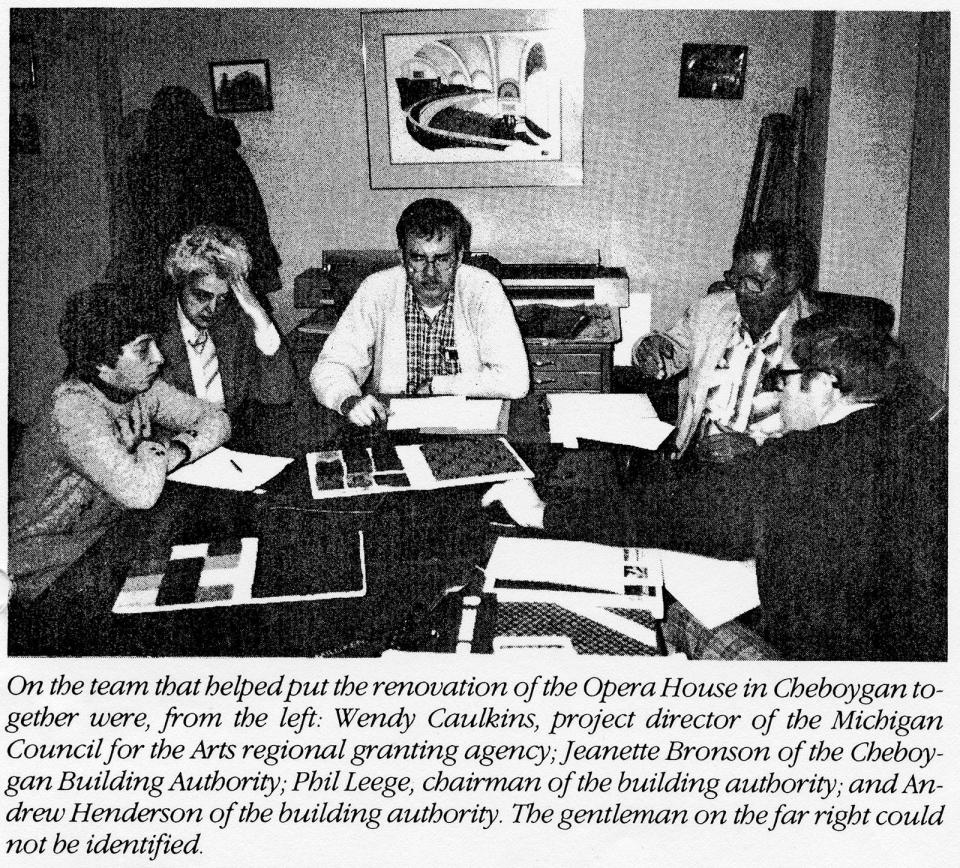History of the Opera House: Shattered dreams
The City of Cheboygan received $1,681,000 in a federal grant from the Economic Development Agency. The funds, given to build a new fire station, police station and to restore the City Hall and Opera House, were approved on Aug. 19,1977. “City Hall, Opera House Grant OKed. Work to Begin in 60-90 days,” the Cheboygan Observer headline read. Outgoing mayor Ellis Olson, who would term out in 1978, called the announcement “another step in the complete revitalization of the city.”

Olson was confident that the grant was more than enough to cover all expenses. He affirmed that “every bit will be used on the building, but the building will be constructed larger and better.” Because he believed there was more than enough money, he and the city council stopped the 15-year millage for the Opera House. They approved a rebate to taxpayers who had paid the milage in 1977. "When finished," he continued, "the facility will provide a new City Hall at no expense to the taxpayers and a theater which will be one of the finest in Northern Michigan.”
Federal grants take time to organize, including a call for bids. Almost a year later, on March 3, 1978, the Cheboygan Observer said, “Tom Shaw gives lowest bid and is awarded job as contractor, 10% has to be awarded to minority contractors. ... The council voted unanimously to authorize the architect, Guy Wenger of the Doug L. Morse Architectural Firm, to negotiate with Shaw and to firm up the minorities ...”
Construction was slated to start two weeks after the contract was signed. It was projected to take 270 days to finish Phase 2, the rebuilding of the police station and firehouse. On the same day, the council hired the local architectural team of Wulff and Nichols to oversee the work including the Morse architects. “They will be our eyes and ears,” City Manager Bill Arnold said. Paul Lavigne became the new mayor on April 3, 1978.
On April 28, the federal government threatened to stop the project. The Observer headline read, “US May Stop Funds for City Hall. Questions of Racial Eligibility on two sub-contractors.” The grant required “that 10 percent of the work be done by firms owned by people of minority races.” Shaw countered, “Straightening out the trouble is partly just a matter of a little paperwork. ... We don’t see it as a problem.” The Jim Payment Painting Co., contracted to paint the interiors, was owned by Jim Payment, a Native American in the Sault, who had done prior work on grant funded projects. "In certifying the Jim Payment Company,” Shaw said, "a typographical error was made. ... This can be straightened out by resubmitting a corrected form.”

Then came cutbacks. Just a month later, on May 2, the Observer said “Plans for air conditioning in the remodeled City Hall and Opera House have been abandoned. The City Council Tuesday night approved a schedule of deductions totaling $40,835 in the city Hall-Opera House project. One of the changes is to eliminate air conditioning controls. The ducts will still be there, and air conditioning could be put in at a later date, if desired.” Expenses mounted rapidly. The idea of a larger and better city hall fell apart as a result.
The bombshell hit a month later, on June 30, 1978. “May Raze City Hall-Opera House and Erect Entirely New Building. Cheaper to Rebuild. Council Fires Architect for Neglect and May Sue,” the Observer headline read.
Tom Shaw uncovered structural issues that were not included in the plans. The city would need an additional $426,711 to restore the Opera House. This was so over the budget, it would cost less to tear down the whole building and build a new one. Architects Wulff and Nichols presented plans for a new building.
More: History of the Opera House: Restoration takes a decade
An oversight by the Douglas Morse Architecture Company was blamed. Morse was fired. “City Manager William Arnold and Wulff and Nichols declared that Morse failed to make a structural analysis before drawing blueprints. The contractor Tom Shaw Inc., bid on the specifications in assumption that they were based on the condition of the building.”
Shaw discovered the issues when he started to replace brick. “The project called for the contractor to replace a major portion of the exterior brick. Shaw asked them how much brick he could take off in safety. Wulff and Nichols asked Douglas Morse for the structural analysis. There wasn't any. The architect for the Morse company said he had assumed that his construction engineer made one.”
With a half a million dollars in unexpected costs, more immediate cutbacks were made, including the millage rebates promised to the taxpayers.
“When the City secured a $1,681,000 federal grant for repair and restoration of the Opera House, it seemed that the local millage would not be needed and the council voted last year to pay it back. The refund was delayed while working on procedure for repaying, though the council stopped any additional collecting of the tax. ... Recently structural weaknesses were found in the City Hall walls and roof that greatly increased cost of building. Even with the $111,000 millage money added, City Manager William Arnold has estimated that the project will be $184,657 short. The council is considering resuming work on the building and taking the shortage out of the Opera House renovation.”
The Opera House once again faced demolition. The Observer said, “The revelations by the city manager and the project overseers were a bomb shell. They shattered the dream of restoring the historic Opera House …”
— Kathy King Johnson is former executive director of the Cheboygan Opera House.
This article originally appeared on Cheboygan Daily Tribune: History of the Opera House: Shattered dreams

